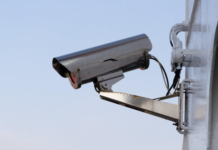
Which home automation technology is best?
When home automation technology is used, a normal house may be transformed into a smart home. It is a remote programming device that may be either wireless or wired, or both at the same time. Sensors, actuators, and controllers are all incorporated into the home automation equipment, which is all controlled via the internet. A method for reducing the need for human help in the execution of a job or process is known as automation. In-home automation allows customers to operate electrical equipment from a computer or a smartphone, allowing them to save time and money. It is a one-step improvement in “Internet of Things app development” as well as a creative solution with a time constraint.
But, what is the best home automation technology? There are several home automation technologies, however, the best home automation technology is the amazon echo. The following are some of the reasons why Amazon Echo is such a great home automation technology hub for many people:
- The procedure for setting up is simple.
- It is compatible with voice commands.
- It comes with a plethora of useful functions.
- A high degree of compatibility
The Amazon Echo
The “Amazon Echo” is a smart brand speaker that can be operated by voice control and also is regulated as well as developed using artificial intelligence. Alexa’s auto-featured speech service opens up a plethora of possibilities for a smart home that is tailored to your daily routine. It provides access to smart devices that can be controlled by voice, remote, and smartphones. Amazon Echo is a little intelligent robot that can be customized and updated regularly.
Echo may function as a stand-alone device, connecting to a cloud-based service to offer music, make calls, set up alarms and schedules, ask questions, and receive weather and traffic information, among other functions. The Echo is equipped with several omnidirectional microphones, which make it simple to receive voice commands from across a room, as well as many speakers, which make it simple to hear what is being said.
In addition, Amazon now offers a variety of product variants to choose from. For those on a tighter budget, there’s the smaller Echo Dot, and the new Echo Dot for Kids, among other models. Whichever model of Echo you choose, it should be compatible with the vast majority of smart peripheral devices. It’s much easier to connect them since you can just ask Alexa to “locate my devices.”
Other Home Automation Technologies
Google Home Hub
The “Google Home hub” is activated by the voice command “Hey Google,” which begins with “Hey Google.” For its voice controlling functionality, it provides a hands-free experience. Google Home Hub can assist you with a variety of tasks like discovering a new recipe, listening to music, setting an alarm, and so much more. It is available in four different hues, and it makes your space seem much more technologically advanced.
It is a more intelligent version of previous Google products such as the mini and max. It is an artificial intelligence-based speaker that performs well in conjunction with smart home gadgets.
Samsung SmartThings Hub v3
Samsung provides a fantastic hub that has both ZigBee and Z-Wave technology. As a result, it is possible to connect to a greater number of devices than with many other hubs. Aside from that, it has the capability of enabling you to build numerous scenarios for any device in your smart house.
A SmartThings hub with built-in Wi-Fi is a fantastic choice for many people. There is no need to connect it to your router. Additionally, you may put it in the most convenient location for connecting to all of your devices. This one, on the other hand, does not have a backup battery and thus needs a continuous power supply. The SmartThings hub is compatible with both the Google Home Assistant and the Amazon Alexa voice assistants. This hub is included in the list due to a variety of reasons, including:
- It is simple to put together.
- You have the ability to build scenes and routines.
- Android and iOS devices may be used with this application.
- It includes a number of different communication protocols.
- It is not necessary for it to be connected to a router.
- Despite how incredible it sounds, you may have some connection difficulties. Aside from that, SmartThings is incompatible with Nest.
Amazon Echo Plus (2nd Gen)
Amazon provides another excellent hub that is compatible with ZigBee devices and also Wi-Fi and Bluetooth ones. It is widely regarded as the finest voice-control hub available. It also comes in a number of wood finishes that may be customized to match your existing home décor. You may make use of the Echo Plus in the following ways:
- To make hands-free calls
- To command Alexa to do actions such as playing music or providing answers to queries
As a home intercom system, the Echo Plus 2nd Generation is equipped with 360-degree Dolby speakers and a tiny woofer, among other features. The following are some of its advantages:
- Voice control is outstanding.
- Alexa’s and IFTTT’s compatibility
- A variety of various finishes are available.
- The Echo Plus, second version, is not compatible with all devices on the market. Additionally, several customers have raised concerns regarding the quality of the voice.
Advantages and disadvantages of home automation technology
We spoke to a representative from Avisiouk, who knows a lot about the home automation system in UK, they said “The comfort of adapting a home to the digital age is undeniable. Any tasks can be done from a screen without having to move. And it can also be controlled from a distance. So, situations that were once common, such as finding our house frozen when returning from work, are not anymore. Home automation has many advantages, however, disadvantages are present too.”
Advantages
Safety: With smart home technology, you may have more sophisticated security systems that include modern cameras, proximity sensors, and other features.
Convenience: When compared to traditional houses, smart homes are mostly more convenient to live in. The usage of automation technology is well-known for making life simpler for those who use it.
Energy and cost-effectiveness: Automated home systems assist you in conserving energy, which ultimately results in money savings.
Enhance home value: Smart homes increase the worth of your house since they not only make your life easier but also add value to your property. The fact that smart houses provide sophisticated features such as temperature control, improved entertainment, smart security, and other amenities typically draws in prospective purchasers, who are ready to spend a premium for such a purchase.
Customization: Smart home programs may be tailored to meet specific needs. They may be customized to meet the needs of individual users to a certain degree.
Easy to install: Installing smart home systems is simple since they are compatible with wireless gadgets that are simple to set up. Installation of systems may be accomplished via the use of the operator’s installation handbook.
Disadvantages
Large investment: Installation of smart technology in your house necessitates a significant initial financial commitment. However, this investment will serve as a lifelong asset for you while also increasing the economic worth of your house.
Internet outages: Internet connection is required for the majority of the home automation functions.
The learning curve: For many individuals who are not technically knowledgeable, using automated systems may be a little challenging at first. However, as time progresses, it gets easier for everyone.
How does smart home technology work?
Smart home technology uses what is often referred to as ‘hubs,’ to come into play. It is a single device that links to all of your smart devices, independent of their manufacturer, and provides you with a simple, user-friendly method to manage them all – even through voice commands – in one convenient location. They do this via the use of connections such as your home network, internet, Bluetooth, ZigBee, z-wave, and other protocols, among others. Companies that provide Wi-Fi services are developing smart home gadgets that can communicate with current Wi-Fi networks in the house. It is one of the most widely used protocols in the home automation industry and is classified as such. Because it uses multiplexing technology, it makes it possible to link smart devices together. Due to Wi-high Fi’s power consumption, it depletes the batteries of a battery-operated network far more quickly than other protocol types. If you have a large number of devices that connect to your Wi-Fi network, adding automated devices to the mix may result in a longer response time from the devices themselves.
Conclusion
The fact that home automation is still in its early stages means that businesses are still striving to make it more efficient and cheap for the general public. Although there are several home automation technologies, there is a good possibility that you are currently using one or two of these items in your home environment.


















